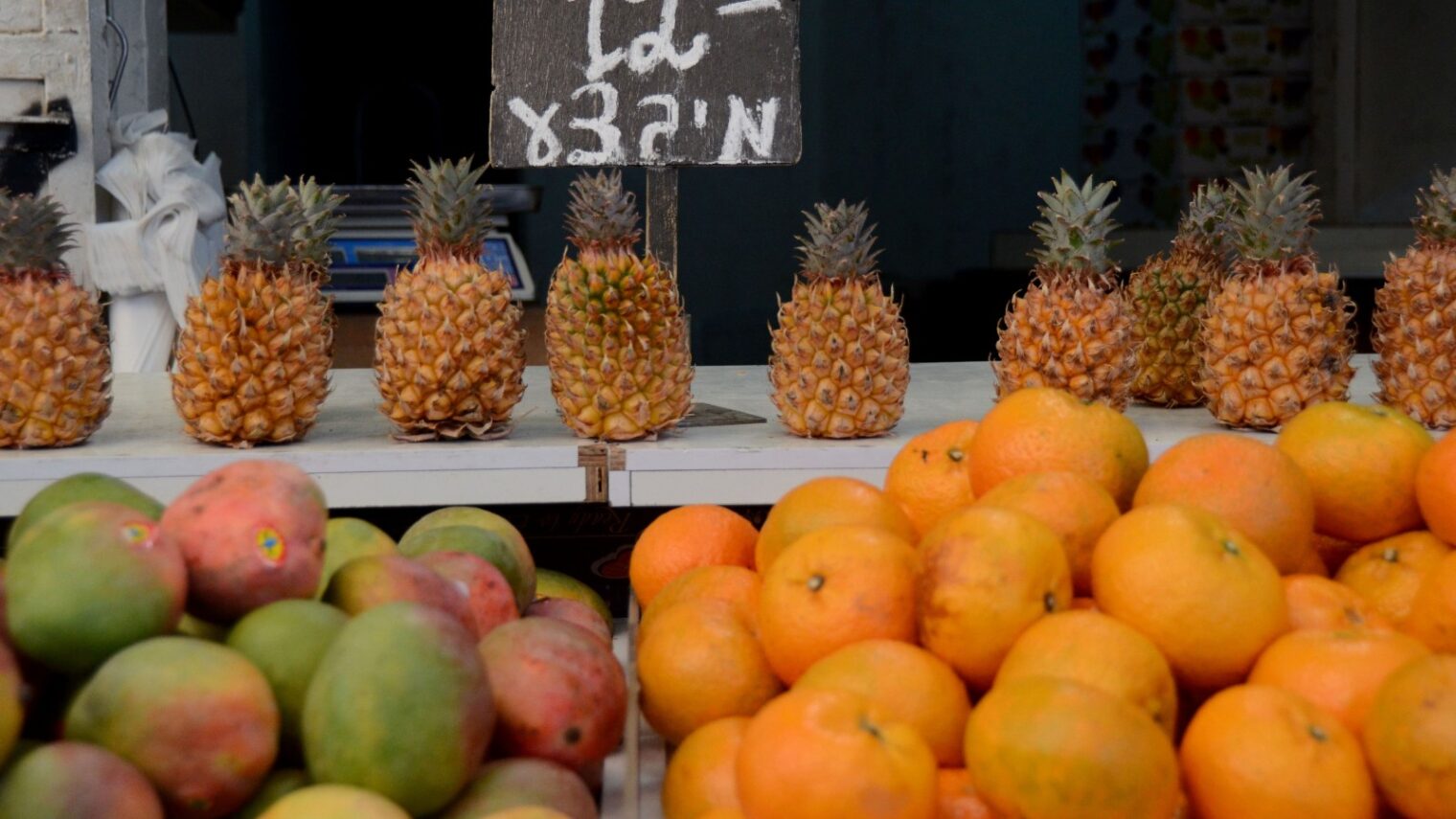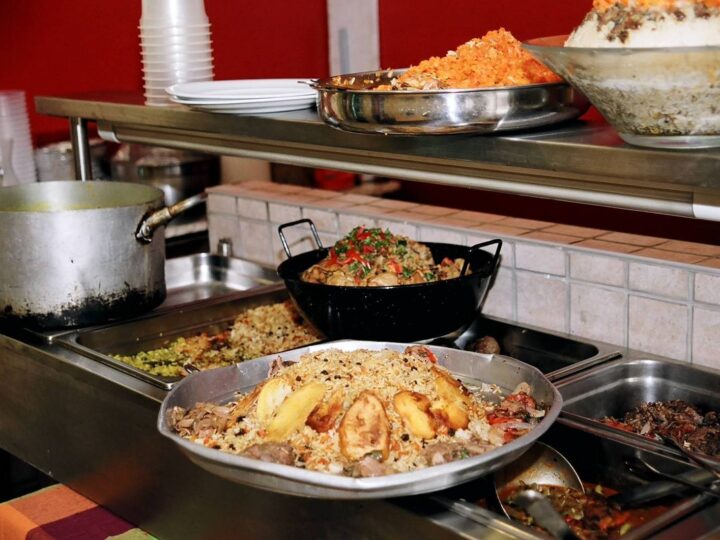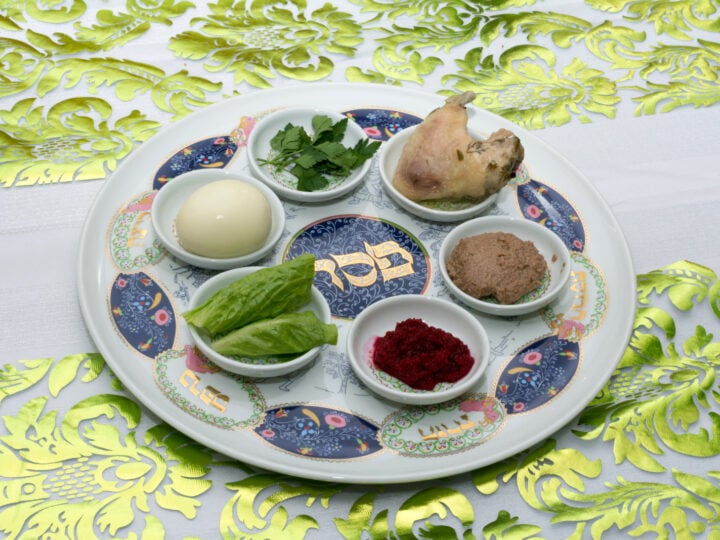“When you let the seasons guide your cooking, it gives a natural framework to what you are making and forces you to focus on the produce and the ingredients.”
When cookbook author Adeena Sussman hosted a camera crew from Food & Wine in August, she searched in vain for a single blood orange in Tel Aviv.
“We had to make our own by dyeing regular orange segments with beet juice,” she tells ISRAEL21c.
It wasn’t that blood oranges were sold out. They were simply out of season.
“Unlike in the United States, where the entire manuscript for a cookbook is written and photographed in one 10-day photo shoot, in Israel you can’t do that because things are so seasonal,” says Sussman.
“For my upcoming book on the foods of Shabbat, we’re doing a series of two-day shoots each season of the year because we can’t miss mangos, avocados, limes, pomegranates or any other fruit that you can’t get when they’re not in season,” she says.
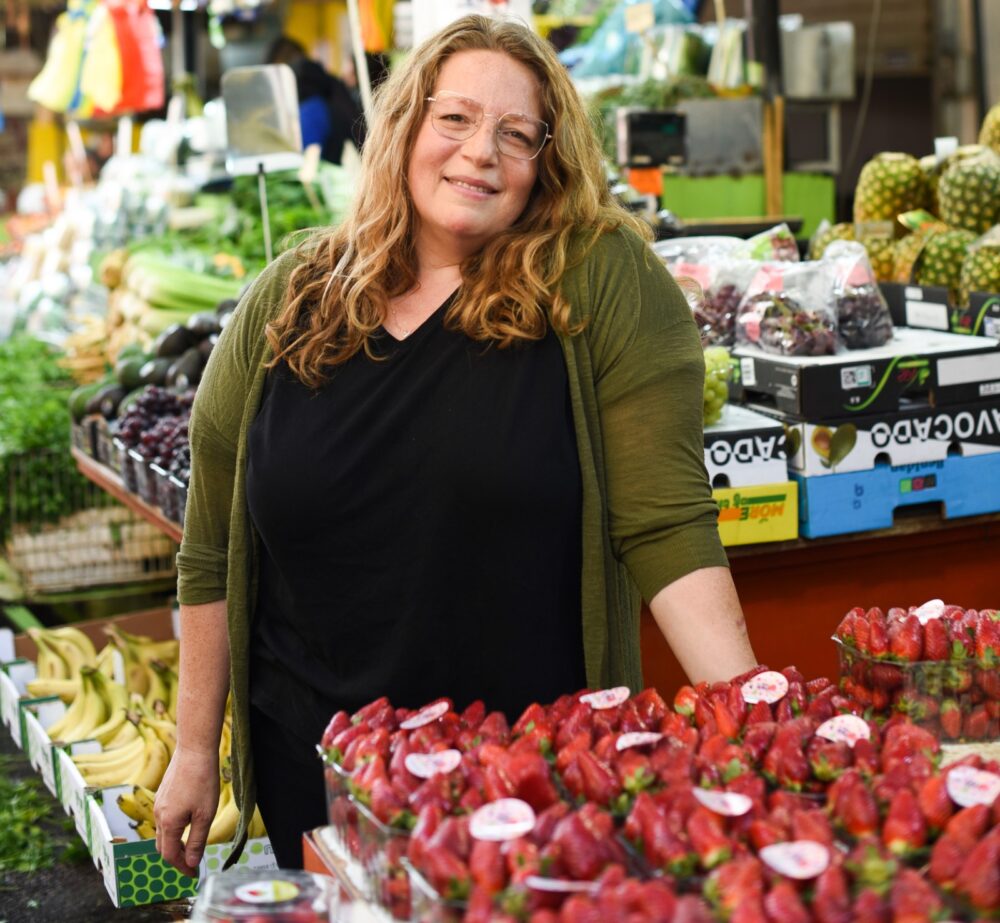
Folks like Sussman, raised in the United States or other countries where any fruit or vegetable is available year-round, must adjust their menu planning and their expectations when living in Israel.
Here, most produce is locally grown. And although you can get staples like root veggies and basic salad fixings any time, other items appear only at specific times of year.
“I try to be inspired by the seasons and use my weekly CSA [community supported agriculture] farm box and the shuk [open-air market] as my guide for what I’m making,” says Sussman.
A seasonal accent
Not that the bestselling author of Sababa: Fresh, Sunny Flavors from My Israeli Kitchen is complaining. Since relocating to Israel permanently five years ago, Sussman has come to appreciate the seasonal nature of food preparation.
“I give a seasonal accent to whatever I’m making. Depending on the time of year, I’ll sprinkle my chicken with apples instead of pomegranate seeds, or garnish my roast with plums instead of figs,” Sussman says.
“It only gets frustrating when I’m developing recipes for clients in the US and they take for granted that you can get an avocado any time of the year. Sometimes I have to improvise,” she says.
“In general, I find it a privilege as opposed to a frustration. When you let the seasons guide your cooking, it gives a natural framework to what you are making and forces you to focus on the produce and the ingredients. In a way it’s a relief because it gives you some filters and constraints,” Sussman says.
“Of course, I’m aware not everyone has access to the seasonal produce, and if you can’t cook with things in season you should still cook freely with joy.”
Pomegranates and asparagus
According to recent reports, more than half the fresh fruit and almost a third of the fresh vegetables in American supermarkets comes from abroad. The United Kingdom imports 42% of its vegetables and 89% of its fruit.
That takes a huge environmental toll if you factor in both the energy involved in long-distance transportation and the water stress put on exporting countries to supply overseas markets.
According to TrendEconomy, in 2020 Israel exported about $600 million worth of fruits, nuts and edible fruit peels, while importing about $362 million of those items.
Imports could rise under a new government plan to lower fruit and vegetable costs by cutting import fees and permitting more foreign competition.
Israeli farmers vehemently oppose this plan, and many Israeli cooks would be sad to lose the seasonal, local aspect of menu planning.
Sussman says seasonality heightens her awareness of the Jewish holiday cycle.
“In the US, the connection between the Jewish calendar and the produce calendar is abstract. But the moment you move to Israel it all comes into sharp relief,” she says.
“Pomegranates are at their peak exactly at Rosh Hashana. On Tu B’Shvat, in the US it’s still winter but in Israel it’s the beginning of spring and I can get asparagus. Living here, I understand the way people filter fruits and vegetables through the lens of the Jewish calendar.”
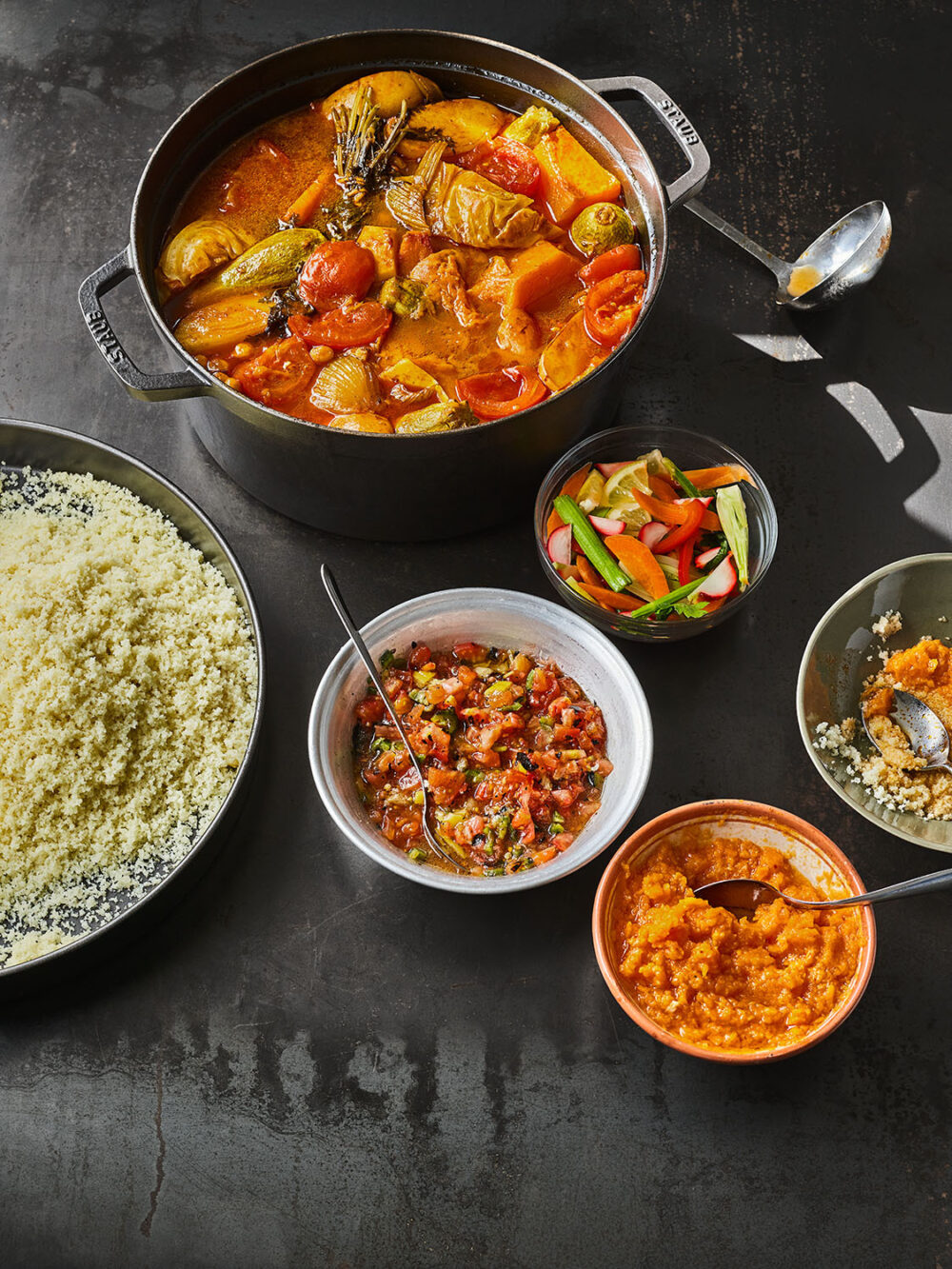
Here is a recipe from Sussman’s Sababa cookbook starring pumpkin, an autumn squash. Her version is accompanied by homemade couscous; you can also use store-bought.
Pumpkin-vegetable stew
8-10 servings
⅔ cup dried chickpeas, or one 15-ounce can chickpeas, drained and rinsed
7 cups low-sodium vegetable broth
⅓ cup grapeseed oil
3 medium carrots, peeled, trimmed, halved lengthwise then crosswise
2 medium onions, peeled, furry ends trimmed, quartered through the root
1 medium celery root, peeled and cut into 8 wedges
3 large celery stalks, outer layers peeled, cut into large chunks
2 tablespoons dark brown sugar
6 sprigs fresh dill
6 sprigs fresh parsley
6 sprigs fresh cilantro
3 tablespoons sweet paprika
4 teaspoons kosher salt, plus more to taste
1 tablespoon freshly ground black pepper
1¼ teaspoons ground cinnamon
1 teaspoon ground mace or ½ teaspoon ground nutmeg
¼ teaspoon ground turmeric
¼ cup tomato paste
1½ pounds seeded pumpkin or kabocha squash, rind on and cut into 4-inch chunks
3 small zucchini (or 2 medium), trimmed but left whole (halved if medium)
½ very small green cabbage, cut into 4 wedges
2 medium ripe tomatoes, cored and quartered
3 small potatoes, halved
- If using dried chickpeas: Place the chickpeas in a bowl, cover with 4 inches of water, cover, and soak on the counter for 10 to 12 hours or in the refrigerator for 24 hours. Drain and rinse the chickpeas.
- In a medium saucepan, keep the broth at a simmer, covered, over very low heat until ready to use. In a large (6- or 8-quart), wide-bottomed soup pot with a tight-fitting lid, heat the grapeseed oil over medium heat.
- Add the carrots and onions and cook, turning occasionally, until the outer parts of the carrots and the onions caramelize, 6 minutes total. Add the celery root and celery and cook until the vegetables soften, 5 minutes. Add the chickpeas, stir in the brown sugar, cover,and cook until the vegetables release liquid, 5 minutes. While the vegetables cook, tie the dill, parsley, and cilantro into a bundle with kitchen twine.
- Stir in the paprika, salt, pepper, cinnamon, mace, and turmeric. Cook 1 minute. Add the tomato paste and cook, stirring, until absorbed, 2 minutes. Add the pumpkin, zucchini, and herb bundle. Add 3 cups of the simmering broth just to cover. Bring to a boil over medium-high heat, reduce the heat to a medium-low, cover, and simmer until the vegetables soften slightly, 15 minutes.
- Uncover, then add the rest of the broth to the pot. Nestle the cabbage, tomatoes, and potatoes into the pot; return to a vigorous boil; reduce the heat to a simmer again; cover; and cook until the potatoes are tender, 40 minutes.
Strawberries and artichokes
For food writer and cookbook contributor/editor Sybil Kaplan of Jerusalem, strawberries and artichokes herald Passover while loquats come a little later, around Shavuot.
On Kaplan’s guided Shuk Walks in Jerusalem’s Machane Yehuda market, she points out local, seasonal fruits and vegetables such as dragon fruit, starfruit and willowy Arabic cucumbers (fakus).
“My favorite spring fruit is shesek [loquat] with those beautiful mahogany brown seeds inside. They are not well known in the States and I always try to introduce them to people who are unfamiliar with them because I find them so special,” Kaplan tells ISRAEL21c.
Kaplan has noticed in the past few years that many types of fruits and vegetables are available for a longer time than in the past. Improved storage and growing techniques help make this possible.
She shared the following recipe featuring pomegranates and apples, two signature fruits of Rosh Hashana cuisine.
Apples baked in pomegranate syrup
6-8 servings
4 apples, cored and cut into 16 wedges each
Juice from half a pomegranate
Apple juice
1/3 cup apricot preserves
½ t. cinnamon
Seeds from half a pomegranate
-
- Spray vegetable cooking spray on a microwavable baking dish.
- Place apple wedges in the dish.
- Squeeze juice from half a pomegranate and add apple juice to make ½ cup.
- Add preserves and cinnamon and mix well. Pour over apples and coat.
- Microwave, covered, at high for 2 minutes and stir. Continue until apples are barely tender, at least 2 minutes more.
- Remove seeds from remaining pomegranate half, sprinkle over apples and serve.




